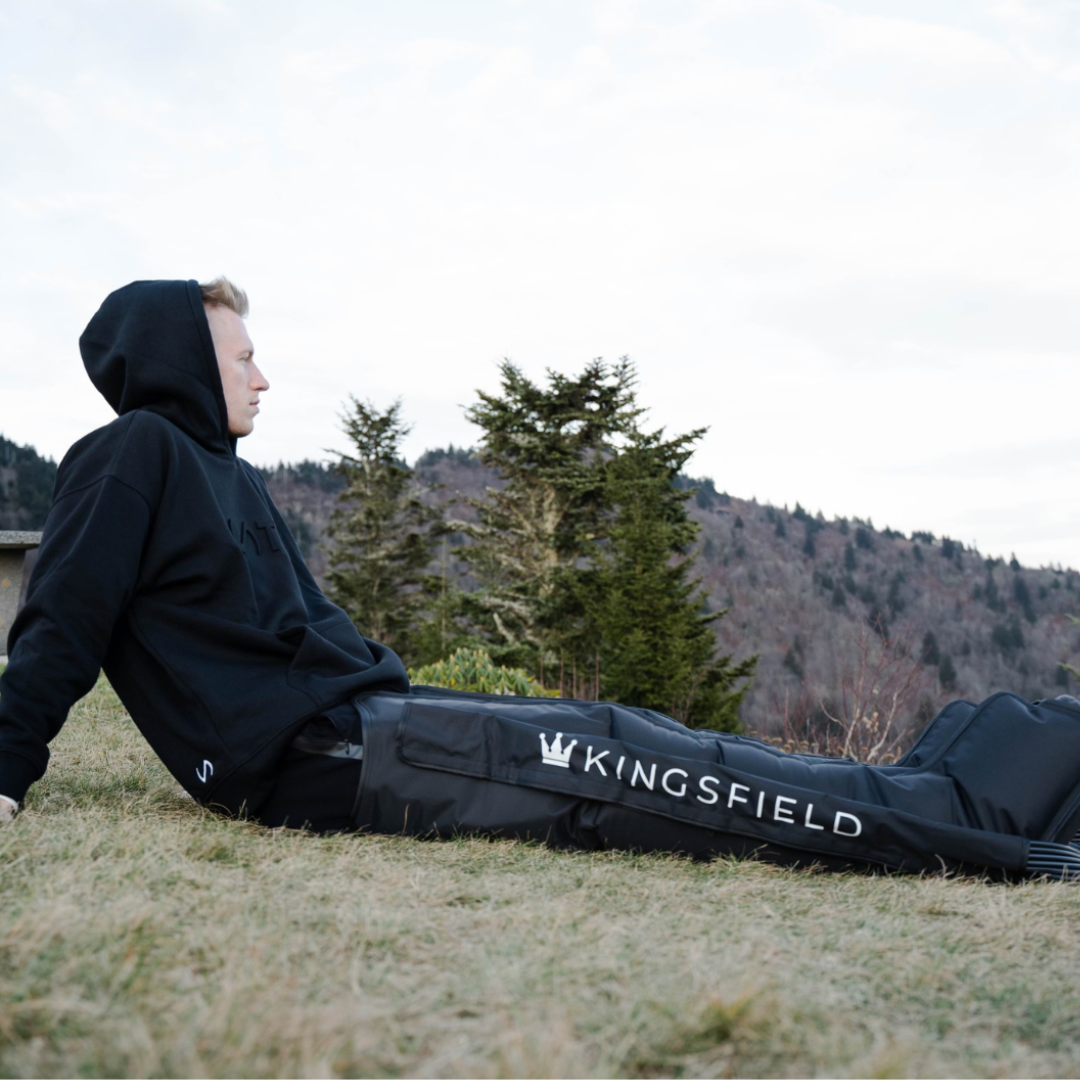Key Takeaway:
- Compression boots can effectively remove metabolic wastes from leg muscles and reduce muscle soreness, swelling, and recovery time for endurance athletes.
- Choosing the right compression boots requires considering factors such as sizing and fit, number of air chambers, cleaning and maintenance, pressure and isolation settings, and various coverage and brand options.
- While the initial investment cost of compression boots may be high, they can be a valuable recovery tool for serious endurance athletes seeking to improve performance and reduce stress on their bodies.
Introduction
Professional Insights on the Benefits of Compression Boots for Endurance Athletes
Compression boots have proven to be an effective tool in boosting endurance athlete's performance and accelerating their recovery time. The benefits of compression therapy have recently been validated in many studies, showcasing its effectiveness in reducing muscle damage and inflammation, improving blood circulation, and enhancing overall physical endurance and recovery. By consistently incorporating compression boots in their training routine, endurance athletes can gain a competitive edge, push their limits, and perform at their best.
Moreover, experts have reported that the use of compression boots has become a common practice among professional athletes and sports teams worldwide. For instance, in a recent interview with The Guardian, Olympic gold medalist Mo Farah noted that compression boots have helped him recover faster and stay injury-free throughout his career. This highlights the growing importance of compression therapy in endurance sports and further supports its validity as a performance and recovery enhancing methodology.
How compression boots work
Compression boots use pneumatic compression to increase blood circulation and promote lymphatic drainage in the legs. The boots are designed with separate chambers that sequentially inflate and deflate to create pressure on the muscles, mimicking the natural pumping action of the legs. This action increases venous return and reduces swelling and inflammation, improving performance and reducing recovery time for endurance athletes. Notably, a study conducted by the Journal of Strength and Conditioning Research found that compression boots reduced muscle soreness by 34% after a high-intensity workout.
Benefits of compression boots for runners and athletes
Compression boots have numerous advantages for runners and other athletes. These boots enhance the recovery time, reduce muscle soreness, and assist in the restoration of damaged tissues. One of the significant benefits of using compression boots is the improvement in blood flow, which leads to enhanced endurance and oxygenation during exercise.
- Compressions boots provide a comfortable and efficient way to recover from intense training sessions, decreasing recovery time, and facilitating the return to exercise.
- Compression boots can aid in preventing muscle soreness or DOMS (Delayed Onset Muscle Soreness), especially after a more prolonged exercise session.
- They can also lessen inflammation and edema, which can help get the muscles back to their initial state faster.
- The compression provided by these boots promotes better circulation throughout the body, delivering nutrients and oxygen while removing waste products like lactic acid.
- Compression boots can benefit an athlete's overall performance by decreasing the time needed for muscles to repair and prepare for secondary activities, increasing overall endurance and reducing injuries.
The use of compression boots is not just limited to recovery. These boots can be highly beneficial even during exercise. The compression helps stabilize the muscles, preventing unwanted vibrations, and reducing the overall amount of shock.
Furthermore, according to a recent study on the benefits of compression boots published in the Journal of Athletic Training, participants reported less perceived soreness and a quicker recovery time after using the boots in comparison to traditional cooling methods.
How to choose the right compression boots
Compression boots are a popular choice among endurance athletes to improve performance and recovery. Choosing the right compression boots is essential to gain maximum benefits. Here's how to select the right compression boots.
- Consider your needs: Choosing the right compression boots depends on the purpose and type of activity. For example, if you're a runner, you may need compression boots that provide extra support to your feet and calves.
- Quality and fit: Invest in high-quality compression boots that provide a snug fit. Ensure that the boots are neither too loose nor too tight as they can be uncomfortable and may reduce the effectiveness of the compression boots.
- Reviews: Check customer reviews to understand the performance, durability, and comfort of the compression boots. Look for brands that have a good track record and positive feedback from users.
Additionally, it's crucial to follow the manufacturer's instructions on usage and care for the compression boots. Remember that compression boots are not a one-size-fits-all solution; ensure that you choose the right boots that cater to your unique requirements.
To avoid missing out on the significant benefits that compression boots offer, choose wisely. Selecting the correct compression boots can make a significant difference in your performance and recovery. So, make an informed decision by considering your needs, quality, fit, and reviews before investing in compression boots.
Potential drawbacks of compression boots
Athletes should be cautious of some limitations associated with compressions boots. Here are a few things to consider regarding the use of compression boots:
- Some athletes could experience skin irritation from the boots' material over prolonged use.
- Compression boots can offer false comfort as they can mask underlying pain, potentially causing more harm long-term.
It is important to note that individual experiences may vary, and before use, it is advisable to consult a medical professional and read the product labels. Compression boots may have benefits to athletes, but potential drawbacks should be considered.
While compression boots have become a popular recovery tool, it is essential to recognize that not all brands and types of compression boots operate the same. Some studies have shown that athletes who tend to wear them for long periods may be prone to compensations in movement, leading to injuries. It is crucial to research and purchase only reputable and trustworthy compression boots to avoid the potential drawbacks.
Conclusion: The importance of considering compression boots as a recovery tool for endurance athletes.
Compression boots have been proven to be an effective recovery tool for endurance athletes. Using compression boots after physical activity can improve performance and reduce recovery time. Endurance athletes should consider incorporating compression boots into their recovery routines to maximize their potential. Despite being a relatively new technology, compression boot usage has rapidly been adopted by world-class athletes across different disciplines. This highlights the immense positive impact compression boots have on the recovery process.
Compression Boots for Endurance Athletes: How They Can Improve Performance and Recovery
- ✅ Compression boots are medical-grade recovery devices that can boost running recovery by reducing soreness, increasing blood flow, and aiding in their body to return to a healthy state with oxygenated blood returning to the legs. (Source: Team Research)
- ✅ Compression boots use compressed air to start to inflate and deflate, creating gentle air massage and removing metabolic and lymphatic waste from leg muscles, much like a lymphatic massage. (Source: Team Research)
- ✅ Legendary athletes ranging from LeBron James to Simone Biles have used compression boots regularly to boost muscle recovery and performance. (Source: Team Research)
- ✅ Compression boots can support runners and athletes by reducing muscle soreness, decreasing swelling in the feet and legs, and speeding up recovery time and performance. (Source: Team Research)
- ✅ When picking compression boots, important factors to consider include sizing and fit, the number of boots chambers, cleanability, settings, coverage, and trusted brands that offer effective options rather than opting for super-cheap recovery boots online that may not be as effective. (Source: Team Research)
FAQs about Compression Boots For Endurance Athletes: How They Can Improve Performance And Recovery
What are compression boots for endurance athletes?
Compression boots are a medical-grade recovery device designed to provide a gentle air massage to the legs of endurance athletes. They are helpful in reducing soreness and increasing blood flow, and aid in flushing out toxins that can build up throughout a training and exercise routine.
How do compression boots work?
Compression boots use compressed air to inflate and deflate at various points across the leg, starting at the feet and working their way up to increase blood flow. This movement removes metabolic and lymphatic waste from the leg muscles. The process is similar to a lymphatic massage and speeds up natural recovery time.
What are the benefits of using compression boots for runners?
Compression boots offer several benefits for runners, including reduction of muscle soreness, support in decreasing swelling in the feet and legs after long runs, and faster recovery times. Compression boots can also provide an opportunity for runners to slow down and enjoy a relaxing, quiet moment.
How do I choose the right size of compression boots?
The fit of compression boots is key. Check out the compression chart to determine the best size based on inseam length and height. It's important to ensure that the boots are not too big, as they won't massage the legs deep enough, and not too small, as they can be painful and uncomfortable.
What should I look for when buying compression boots?
When buying compression boots, consider the number of chambers, as more chambers provide a better massage. Additionally, look for boots that are easily cleaned, have multiple settings for pressure and isolation, full-coverage recovery boots, or calf recovery boots that target specific areas. Trusted brands such as Normatec boots by Hyperice are a popular choice. Be cautious of super-cheap recovery boots online as they may not be effective.
What are the potential negative factors of using compression boots?
One potential negative factor is the cost, as most compression boots can cost anywhere from $1,000 and up. Another factor is the learning curve for proper use, although this can be easily overcome with practice.


